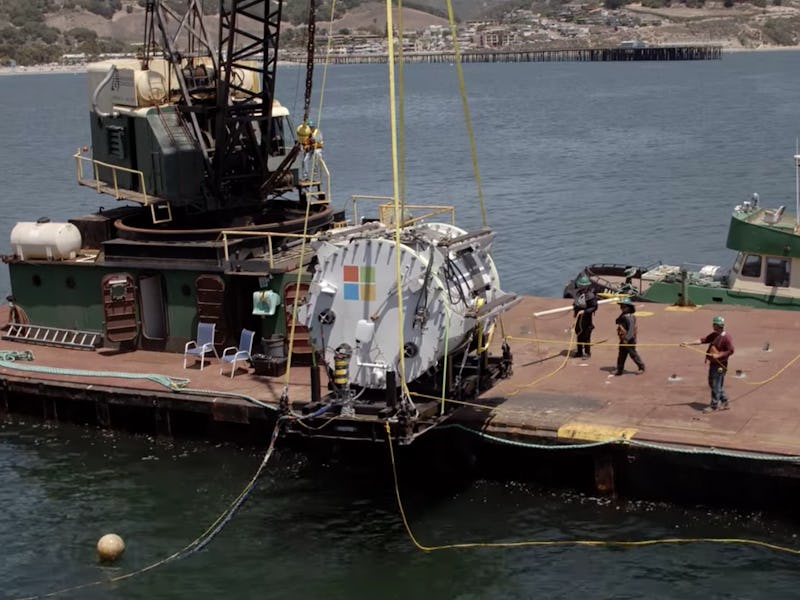Microsoft's Underwater Server Will Host Sea Creatures and Data
Under the sea!

Next time you retrieve a file from your Hotmail inbox, you could be knocking on the door of a thriving underwater habitat with a computer server at its core. Microsoft’s Project Natick, an ambitious plan to throw data servers into the sea housed in special containers, received a boost at the end of last month when the company published a new patent for an artificial reef.
Many artificial reefs are built from objects like old ships, but these pose environmental hazards depending on the materials used. The patent, discovered by Patent Yogi last Monday, describes a data center that would act as a more environmentally-friendly reef and help the development of underwater creatures. The machines provide warmth and nutrients to nearby life, and Microsoft plans to use a combination of hoses, trellises, and other life-promoting components.
The servers themselves are the same as found in any data center, modified for undersea action. To keep everything ticking over, the cooling system is attached to the outside, with the heat exchangers on the outer shell. An intrusion system alerts Microsoft if anyone tampers with the machine, using a combination of pressure and vibration sensors to monitor the situation and deleting the encryption keys in a worst-case scenario.
“Moving data centers to the ocean made a great amount of sense to be able to make the actual cable to our customers as short as possible,” Jeff Kramer, Microsoft research engineer, said in an introductory video outlining the project in February 2016.
The servers are fast and flexible. From the decision to throw one out to sea, to flipping the switch, the whole process takes 90 days. Microsoft’s plan also makes sense in terms of latency: half of the world lives within 200 kilometers of the ocean.
“It’s kind of like launching a satellite to space,” Kramer said. “Once you’ve built it, and you hand it to the guys with the rocket, or in our case the crane, you can’t do anything about it if it screws up.”
Watch Project Natick in action here: